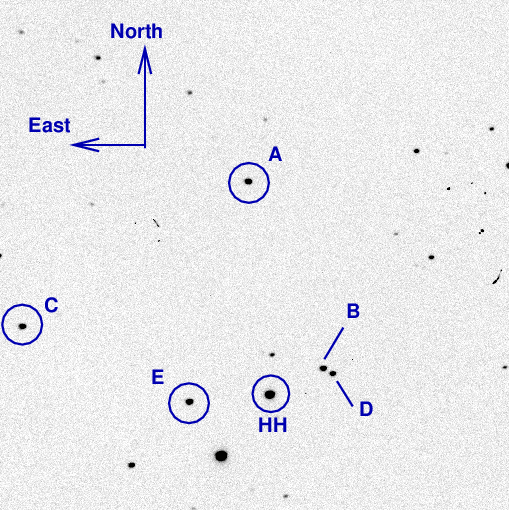
On the night of July 2/3, 2015, Kaitlin Schmidt, Jen Connelly and I observed the eclipsing contact binary star HH UMa.
The main setup was:
Notes from the night
This object is a nice eclipsing binary star with a continuously varying light curve; a number of papers describing it provide many details, including a period of 0.375494 days = 9.01 hours.
Here's a chart of the field of HH UMa which is at
RA = 11:04:48.1 Dec = +35:36:27 (J2000)
The chart is about 12x12 arcminutes.

Among the labelled stars is
A UCAC4 629-045393 V = 12.721
In order to find HH UMa, the following charts may help. First, a picture about 1.2-by-1.2 degrees on a side from the DSS2 Red plate. The bright star HD 95735, with V = 7.5, is at upper right.

Last night, our finder telescope's video camera recorded this image when we were on the target. The two dark marks are pieces of tape showing the spot at which an object is in the smaller CCD field. Note that the circled stars in the previous chart are all visible, except for the bright HD 95735 -- it lies just out of the picture at top right.
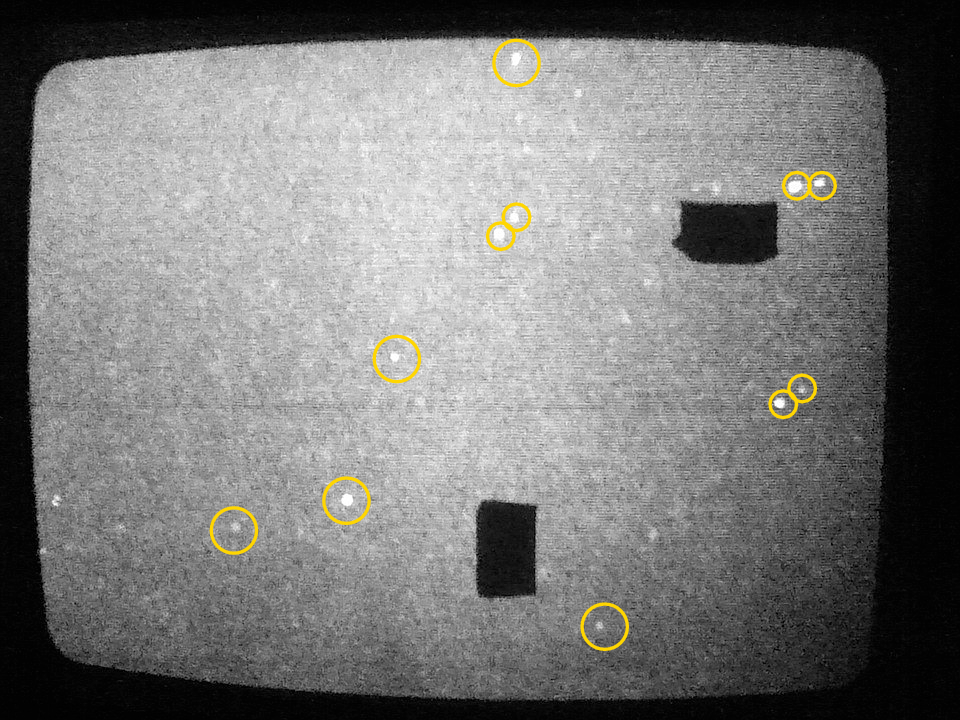
Below is a graph showing the sky brightness as a function of time during the observing run. No evidence for clouds, but you can see how bright the sky grew as we followed HH UMa down to the horizon.

Below is a graph showing the FWHM as a function of time during the observing run. Note the many images with higher-than-average FWHM, due to trailing. I discarded any image with FWHM > 3.5 pixels before continuing the analysis.

Using aperture photometry with a radius of 5 pixels (radius of 7.1 arcsec), I measured the instrumental magnitudes of a number of reference stars and the target. Following the procedures outlined by Kent Honeycutt's article on inhomogeneous ensemble photometry, I used all stars available in each image to define a reference frame, and measured each star against this frame.
Sigma-vs-mag plot: The brightest star is BD +36 2151, and the second-brightest star is the target.
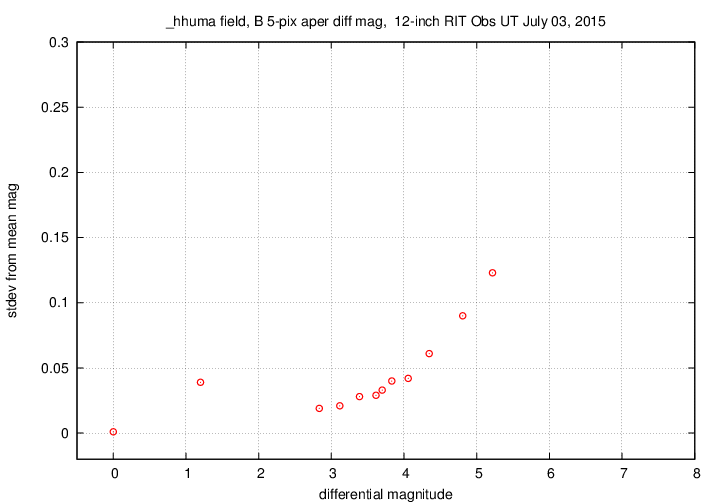
Image adjustment factor: note again the lack of clouds. The outliers are (probably) images with some trailing that escaped my purge.
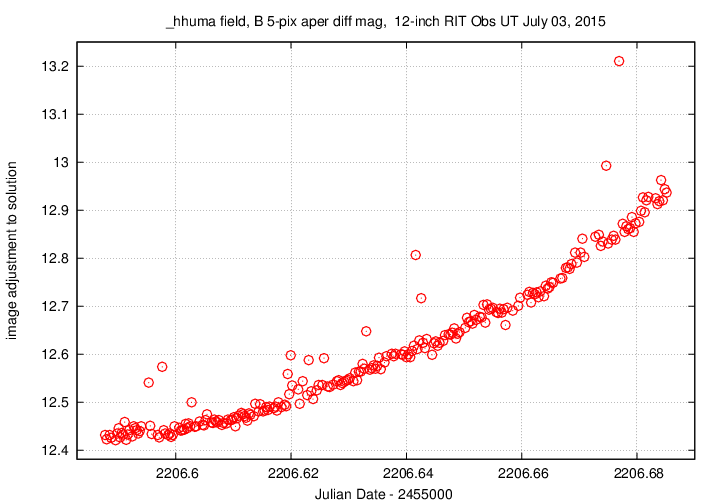
The target, shown in green, runs down to a minimum and starts to recover.
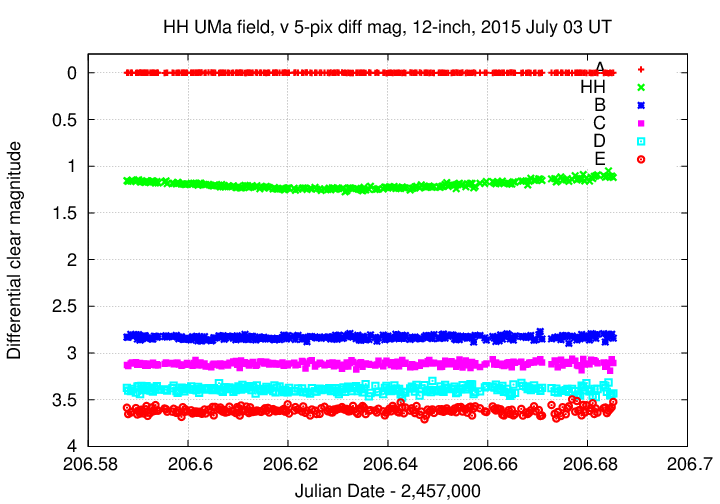
Here's a closeup, showing just HH UMa. Note the increased scatter at late times; the airmass reached 2.4 at 206.64, and 3.6 by the end of the run.
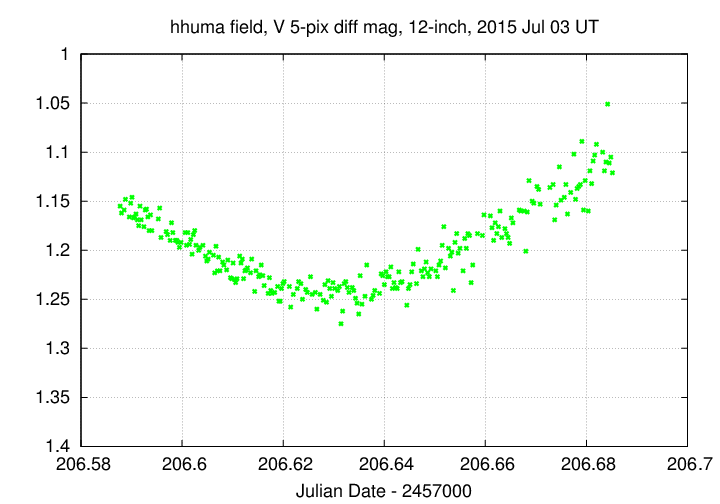
Last modified 6/03/2015 by MWR.